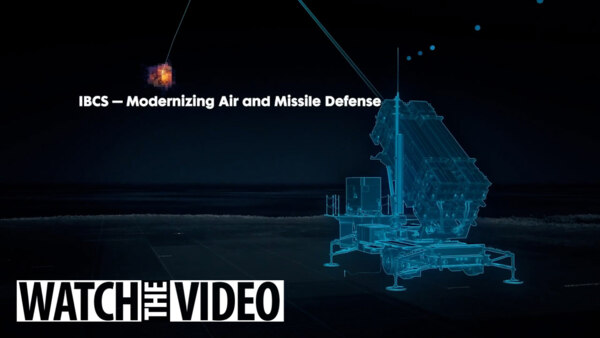US prepares for major attack on DC by cruise missile and hijacked jet in chilling test of new ‘Battle Command’ system


THE US army tested out it's new 'Battle Command' system by simulating a major attack on Washington DC.
Soldiers testing a new command centre rehearsed a terrifying coordinated strike by cruise missile and hijacked jet.
Using the Integrated Battle Command System (IBCS) to track the incoming 'projectiles' heading for the White House, the army intercepted the weapons before disaster struck.
A video showed how a variety of sensors communicate any detected threats and quickly respond.
During demonstrations, Army and Air Force sensors combined to create a new "network" which quickly identified the target and eliminated it.
Tech involved in the defence system includes the Sentinel radar, the Avenger rocket launcher, the Patriot battery system and the National Advanced Surface-to-Air-Missile system.
All together, the complex kit helped run a successful test of the new IBCS - described as the centrepiece of the US Army's modernisation strategy for air and missile defence.
Defence company Northrop Grumman explained how the IBCS defended Washington DC in the series of recent realistic drills.
They said: "IBCS defended the National Capital Region against simulated cruise missile and compromised aircraft in a series of recent demonstrations, an evolution of technical capabilities for the system."
Rebecca Torzone, vice president and general manager of combat systems and mission readiness for Northrop Grumman, said IBCS has continuously shown its abilities.
She said: "Through the recent National Capital Region demonstrations, IBCS proved its capabilities in providing homeland defense against cruise missiles and other aerial threats."
Brigadier General Frank Lozano, Program Executive Officer of Missiles and Space, said earlier this year: "The Army is proving it can and will succeed with its modernisation plans as we continue to build momentum for the future.
"The success of this program is a testament to the incredible talent and capability of the soldiers, civilians and industry partners whose work ensures the safety and security of our nation."
Current technology used by the United States is able to track and identify a threat quickly.
But the IBCS uses multiple sensors and weapons systems to decide which are best to take out the target.
The successful test run of IBCS comes as Biden is flexing America's impressive arsenal ahead of his visit to Israel.
American military is increasing its firepower in the Middle East as it looks to prevent Iran and other Iran-backed groups from getting involved in the conflict.
The US empire of steel includes a network of bases in the Middle East with 2,000 troops, 2,400 Marines, and 13 warships now on alert.
A few A-10 Warthog and F-15Es attack planes arrived in the region last week, with more advanced military aircraft expected to join.
The Pentagon is also rushing air defences and munitions to Israel, as well as an aircraft carrier monster fleet to the eastern Mediterranean, reports.